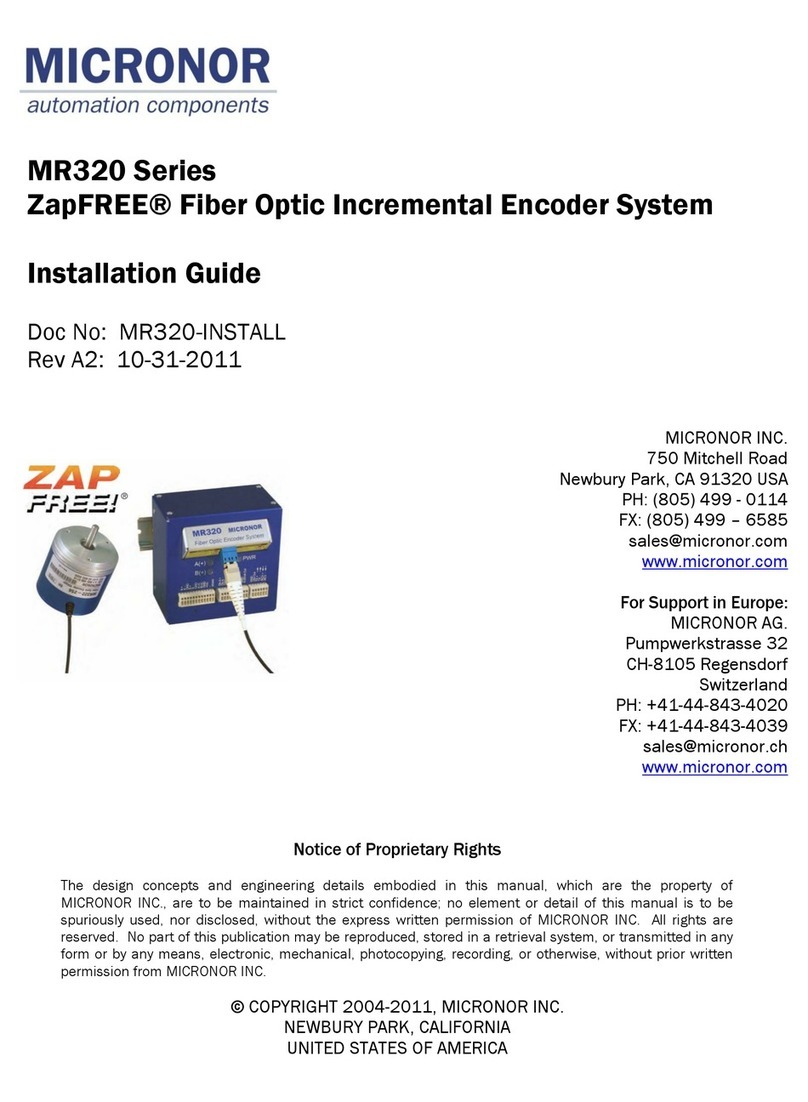MR330 Fiber Optic Position Sensor System
Page 3 of 62
Table of Contents
Revision History ..........................................................................................................................................2
1. Product Description.............................................................................................................................5
1.1 Position Sensor Background .......................................................................................... 5
1.2 Fiber Optic Position Sensor ............................................................................................ 5
1.3 Features........................................................................................................................... 6
2. Initial Preparation................................................................................................................................7
2.1 Unpacking and Inspection .............................................................................................. 7
2.2 Damage in Shipment ...................................................................................................... 7
2.3 Standard Contents.......................................................................................................... 7
3. Installation and Operation ..................................................................................................................8
3.1 Mounting the Sensor Unit............................................................................................... 8
3.2 Mounting the Controller Unit .......................................................................................... 9
3.3 Connecting the Controller.............................................................................................10
3.4 System Start-Up without PC Computer ........................................................................13
3.5 Functional System Overview.........................................................................................14
3.6 Turn-Counter or Turn-Counter Size...............................................................................16
3.7 Multi-Turn Operation .....................................................................................................17
3.8 Battery Backup for Multi-Turn Operation.....................................................................18
3.9 SSI Interface ..................................................................................................................18
3.10 Voltage Output...............................................................................................................20
3.11 Isolated Current Output (4-20mA)................................................................................22
3.12 Digital Set Points...........................................................................................................23
4. Serial Communication – MODBUS.................................................................................................. 25
4.1 USB-Serial Emulator......................................................................................................25
4.2 Serial Interface Specification .......................................................................................26
4.3 Physical Connection for ModBus operation ................................................................26
4.4 Serial Bus Termination Resistor...................................................................................27
4.5 MODBUS Communications Protocol ............................................................................27
5. MR330 - Error Handling and Troubleshooting................................................................................ 34
5.1 Explanation of Status and Error Handling ...................................................................34
5.2 Explanation of Status and Error Indication..................................................................34
5.3 Reading the Error Counters..........................................................................................38
5.4 About Statistical Read Error Determination ................................................................38
5.5 Warranty Information ....................................................................................................40
6. Specifications................................................................................................................................... 41































